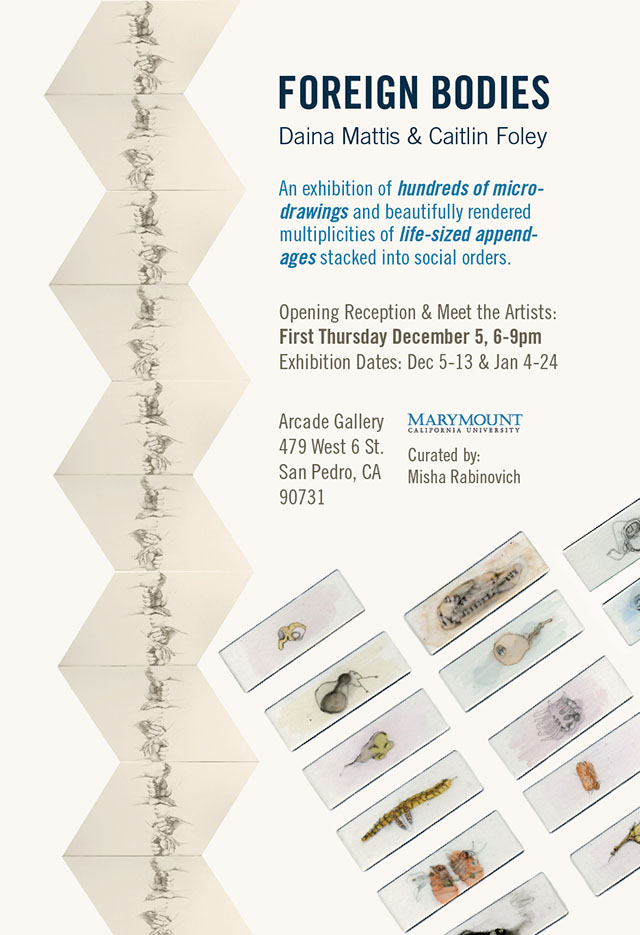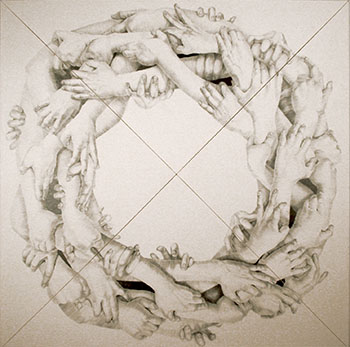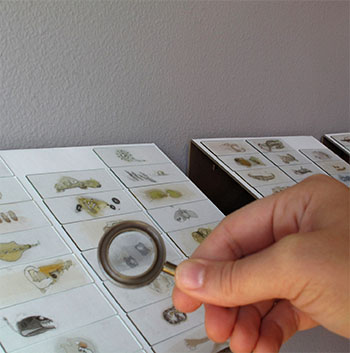Foreign Bodies
An exhibition of hundreds of micro-drawings and beautiful multiplicities of life-sized appendages.

PDF Version
Los Angeles, (November 18th, 2013) — Marymount California University Department of Arts & Media are proud to present Foreign Bodies. This exhibition bridges the idealized external figure and the abstract internal body through a dissection of the inner and multiplication of the outer. Both artists start with drawing inspired in part by the figurative body, but end up with artwork at opposite ends of scale. Daina Mattis follows the path outward and produces life size drawing installations and figurative wooden sculptures while Caitlin Foley focusses inward and creates arrangements of hundreds of tiny drawings on microscope slides intermingled with displays of audio. Emanating into the macro and the micro spectrums, Foley and Mattis's work shares the common origin of daily social experience.
In Toxic Remedies Caitlin Foley archives invented pathogen bodies/antibodies using colorful treatments of small uniform pieces of glass that are usually used for scientific microscope analysis. Foley's delicate use of line quality—which shows great variation even within a tiny scale—amplifies the contrast between the phantasms captured within the slides. Foley's artwork looks deep within the internal body: that space which is both familiar to us yet invisible and thus constantly abstracted with metaphors. Yet the work is cognizant of the social ramifications of these internal abstractions. According to Foley, Toxic Remedies "questions and celebrates the way we reconcile our everyday external reality with our internal body."


